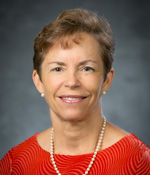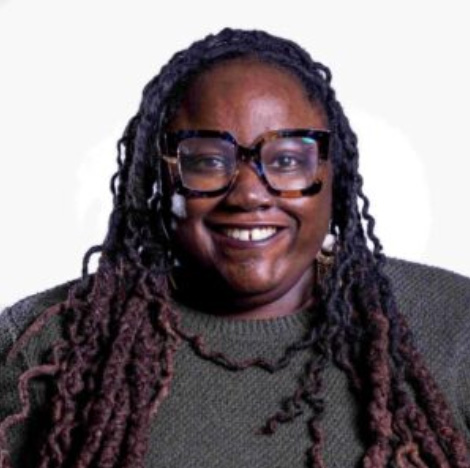As we cleaned up at the end of a recent four-day session of Foundations of Christian Leadership in Chicago, I overheard a conversation between a white female Ph.D. in horticulture who directs a garden employing 16 Black teens as part of a Christian Community Development Association, a gay Latino Catholic who is a former seminarian now working with merged parishes of immigrants as an economic justice community organizer, and a Black man ministering with gunshot victims and families through a gospel-rooted local nonprofit.
They were making plans to visit each other.
We have made a “preferential option” in Foundations of Christian Leadership for ministers on the less secure and lower rungs of the leadership ladders in our institutions as well as those launching new ministries. We bring them together, making space for unlikely encounters that at times are transformational.
In this time of excruciating division, Christian leaders need bodily experiences of unity. We need to stand in a circle and eat the tangible truth that we all belong. We can intentionally design for this. We can do our part to bring together the vital ingredients of inspiring and challenging local context and teachers, labor to knead the dough of community through listening, study, and worship, and trust the Holy Spirit as the yeast that bubbles in the sweet water feeding the learning community.
Science is helping us understand why it is so hard to choose to be together with those who are very different from us. Evidence from social psychology, social neuroscience and even neurobiology suggests that our decisions and actions driven by empathy are biased to prefer those in our in-group.
Strong phylogenetic roots wire us to care most for close kin. But when we have opportunities to listen to each other one on one, whether in small or large group conversations, shared neural activations happen. To expand our ability to be and act as church in solidarity, our bodies need to be in places where we can build ties that transform who it is that we know and experience as kin.
What have we learned about designing for this? When I first started researching leadership program designs, few of my peers put their secrets on the table. Even finding the written objectives of the Foundations of Christian Leadership program I was employed to run involved a treasure hunt through webpages and online report files.
Working with our executive director, I clarified the key goals in the language of participant outcomes. I believed in them and was especially grateful for the emphasis on cultivating hopeful vision and empowering participants to be agents of creativity for the missions of their institutions.
We created a fresh chart of objectives that expanded to include affective, behavioral and cognitive aspects, along with related design elements like worship, small groups, assessments, readings, activities and partnerships with local social innovators.
I proposed a few improvements tied to research and our organizational values and identified approaches to gather evidence for evaluation. As much as I love clarifying program theory and orchestrating the elements with the crescendo of humans gathering to learn from each other (even online), what has generated unexpected meaning for me is the challenge of recruiting and lowering the barriers to welcoming diverse participants.
The name of a recent Hispanic ministry conference, “Roots and Wings,” is a beautiful metaphor for our key value at Leadership Education at Duke Divinity of traditioned innovation. I asked myself whether some in ministry need the stability of roots and the uplift of wings more than others. Do some deserve it more than others at this time?
Getting clear on a preferential option for recruiting “second-chair” leaders who are marginalized, less resourced, minority, bridge-building, risk-taking, justice-loving innovators in all kinds of Christian institutions has made all the difference. In my own marginality as the first Latina and Catholic to serve on the team, I saw that we had few Hispanic and Latino or Latina participants and particularly worked to reach out to them.
We let go of expectations for someone to have a master’s degree in ministry, denominational affiliation, perfect English or even legal immigration status because of our conviction that there are many serving our church heroically in myriad ways without the security of formal credentials or legal status.
In my industrial/organizational psychology studies, I learned that one of the secrets to getting great people on board in an organization or training is to be very clear about minimums in education and experience and let go of historically assumed requirements not actually tied to work performance.
Self-selection is a very real thing in jobs and in programs like ours. In every interaction and program description, we desire eligible prospects to see welcome signs and not roadblocks. Over time, the diversity of the cohorts grew exponentially, and their recommendations became the source of new contacts to engage through personal email.
Each promotional email became an invitation for a conversation, and each conversation became a sacred interaction, more in a coaching vein. I focused on helping my conversation partners experience that there are people in the church who want to invest in them — “Perhaps Foundations is a resource you could benefit from on your leadership and ministry journey, and if not now, we wish you continued growth (and we have a free magazine!).” This takes time.
Why work so hard to bring together diverse cohorts? At this moment of realizing that our racist past must be transformed by God’s grace through our awareness and work, we still have so few opportunities to meet as equals in the body of Christ across race, culture, gender, denominations, organizations and roles. Participants describe encountering something they didn’t know they needed and were longing for.
“This was by far the most diverse gathering of [Christian] leaders I’ve ever been a part of, and it was an enormous blessing,” one participant wrote of our time in Chicago. “I loved it.”
We taste an expanded identity and belonging. All of us are working at this kin-dom thing from different angles, and a profound sense of hope arises as we experience the “visible unity of the body of Christ.” In nourishing the roots and wings of our participants, we are also strengthening our own.
Getting clear on a preferential option for recruiting “second-chair” leaders who are marginalized, less resourced, minority, bridge-building, risk-taking, justice-loving innovators in all kinds of Christian institutions has made all the difference.













